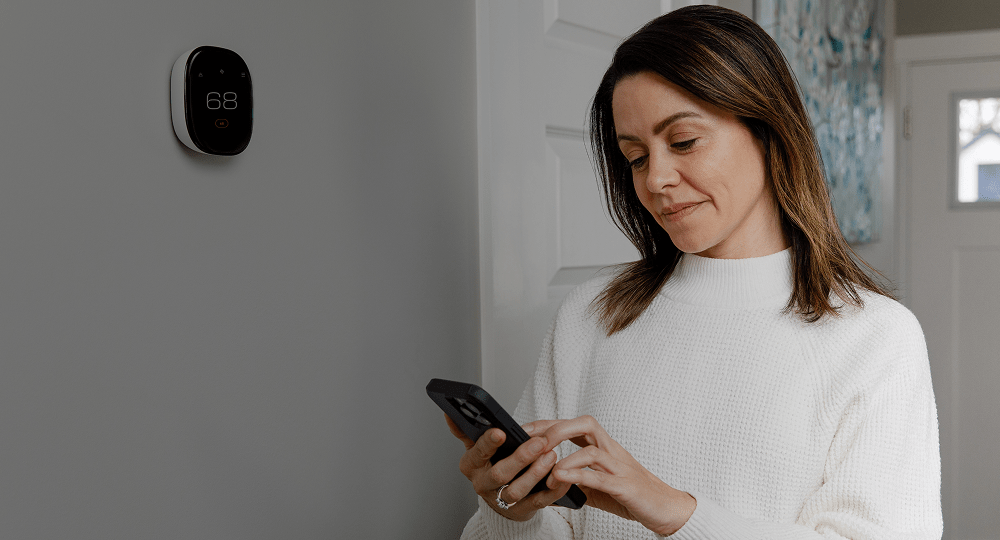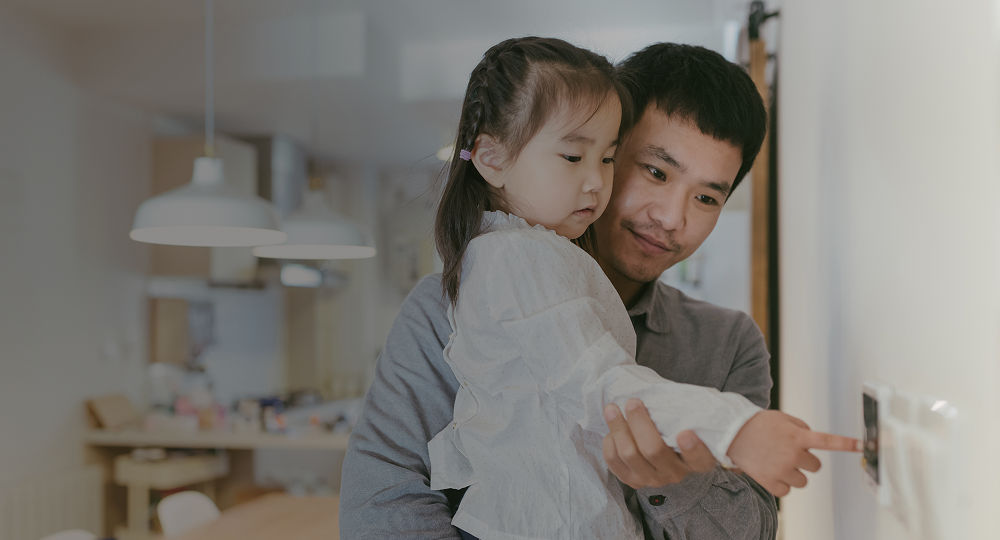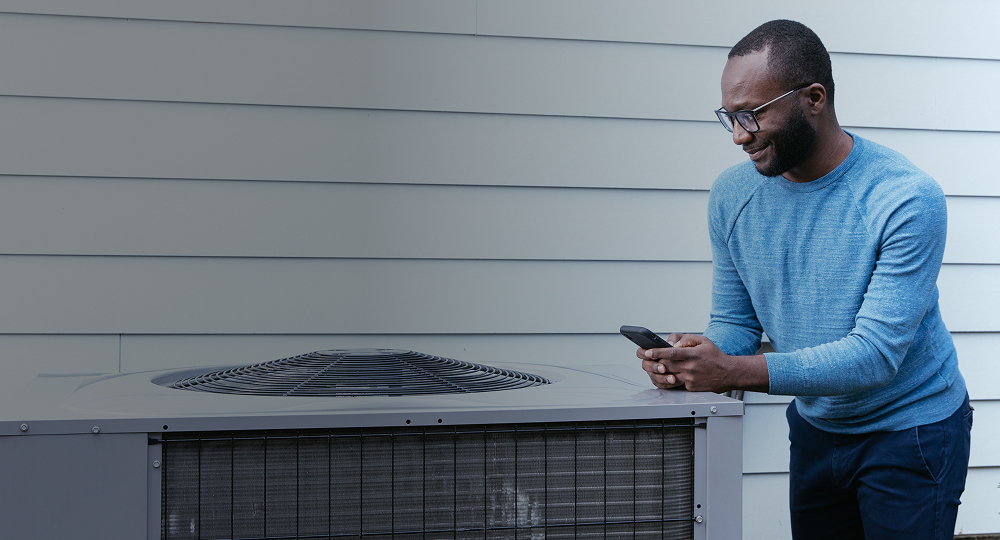14 ways to keep your home cool all summer long

If you live in the South then you know how Southern summers feel. (Cue someone saying, “It’s not the heat, it’s the humidity“!) Blazing temperatures can start in late spring and run all the way into early fall. So, we’ve rounded up 14 ways to stay cool, use less energy and keep your energy bill from going off the rails. Stay summer-ready whether it’s April, August or October!
The best thermostat setting for summer, and more tips for your AC.
Rule breakers, we’ve got some exciting news for you. If your home has a “don’t touch the thermostat” enforcer, their reign may now be over. Check out these ways to get the most out of your air conditioning, including changing the temperature on your thermostat.
1. Bump up your thermostat a few degrees when you’re home.
Did you know that, for every degree above 72° F, you can save up to 3% on your energy bill? For maximum summer energy savings, aim for 78° F when you’re home. Or if you’re going to be away for an extended period of time (six or more hours), that’s also a good time to bump up the temperature. Just remember, when you’re ready to cool the house back down, only set it to your desired temperature. Dropping the temperature as low as it can go doesn’t make your AC work faster, but it will make your system work harder for longer.
2. Get an HVAC tune-up.
It’s a good idea to get your HVAC system tuned up twice a year — once before the spring/summer season and once before the fall/winter season. An HVAC technician can pinpoint any issues that might cause you problems later in the season so they can be repaired now. If you’re looking for HVAC service you can trust, search EnergyRight’s Quality Contractor Network. You’ll find options for TVA-vetted pros in your area.
3. Replace your air filter.
A dirty air filter makes your HVAC system work harder. That means it will use more energy and drive up your energy bill. Set a reminder in your calendar to replace your air filter once a month, or at least once a quarter.
4. Check the seals of all AC window units.
If you have AC window units, make sure you check all the seals. Gaps and cracks around your AC allow all that nice, cool air to escape. Seal any spaces with weatherstripping.
5. Open and clean vents.
Contrary to popular belief, closing vents in one room to drive more cool air to another doesn’t work. Closing vents or covering them with rugs or furniture makes your HVAC system work harder and can damage the compressor.
6. Use a dehumidifier.
The U.S. Environmental Protection Agency recommends maintaining an indoor humidity range of 30% to 50%. If the humidity creeps above that range, your home can start to feel like a sauna, requiring additional cooling. Plus, more humidity equals more moisture in the air, and that extra moisture can eventually lead to mold issues that could damage your home and result in health issues. A dehumidifier is a quick and easy way to lower humidity inside. (Fun fact: You can find affordable and energy efficient air quality monitors and dehumidifiers in the EnergyRight Marketplace.)
Quick and easy energy efficiency tips for your windows and doors.
There’s nothing like filling your house with fresh air on a warm spring day. But on a swelteringly hot summer day? Not so much. Your windows and doors can be your gateway to summer energy savings when the AC is blasting.
7. Close doors and windows.
It sounds obvious, but the best way to keep your home cool in the summer is to keep doors and windows shut. Running the AC with even one door or window cracked is like letting money fall right out of your wallet.
8. Keep blinds and curtains closed.
You don’t need to turn your house into a dungeon during the summer to keep cool, but it’s definitely worth it to strategically close your curtains and blinds. If you know one room or side of your home gets full sun in the afternoon, close the curtains and blinds at that time. Or if the house is empty all day, go ahead and close everything up.
9. Caulk and weatherstrip around windows and doors.
It’s always a good idea before every change in season to walk around your home, inside and out, and look for any gaps or cracks around your windows and doors. Seal any openings you find with some inexpensive caulk, weatherstripping or spray foam. This can make a significant impact on your indoor comfort and energy bill.

Lock in your cool air with these summer insulation tips.
We’ve already covered how important it is to seal any cracks or gaps along your windows and doors, but let’s not stop there! There are all kinds of ways for air to sneak in and out of your house.
10. Check the attic and basement for air leaks.
The attic and basement are common areas for air leaks. Poor or aging insulation, cracks in air ducts, and exterior wall or roof damage can provide perfect escape routes for your air conditioning. While some leaks are easier to find than others, we recommend scheduling a free Home Energy Evaluation. An EnergyRight Home Energy Advisor will perform an energy audit of your home and provide you with a clear and simple report about your home’s energy efficiency with personalized strategies for improving efficiency moving forward.
11. Install light switch and electrical outlet socket sealers.
You know all those light switches and outlets around your house built into exterior walls? (Think: light switches to outdoor spaces or outlets near doors and windows.) Those spots are a super sneaky way for air to leak in and out of your home. Pick up a pack of inexpensive socket sealers, pop them onto the back of the light switch and outlet plates, screw them back into the wall and you’re good to go!
Don’t forget about these heat-blocking hacks.
Last but not least, we’ve got a few more simple ways to block summer heat from ruining the cool comfort of the indoors. The best part? They’re all free.
12. Set ceiling fans to spin counterclockwise.
Got 15 seconds? Flip the switches on your ceiling fans so they rotate counterclockwise, making a nice downdraft. Remember, though, ceiling fans cool people, not the room. There’s no need to keep ceiling fans or personal fans on in an empty room.
13. Close the fireplace damper.
Make sure your fireplace damper remains closed during the summer months. This will stop cool air from flying up and away (and prevent any critters looking for their own place to cool off from sneaking in).
14. Take the free DIY Home Energy Assessment.
If you’re interested in a Home Energy Evaluation, but don’t know when to fit it into your busy summer schedule, try our free DIY Home Energy Assessment instead. You go at your own pace when the time is right for you. It’s all online (desktop or mobile) and walks you through your home with step-by-step instructions. When you’re done, you’ll get a report highlighting where your home is losing energy and what you can do to increase energy efficiency. Plus, you get a free energy-saving kit filled with things like LED bulbs, weatherproofing materials and a Home Depot gift card.
Get help with your summer energy bill.
Summer heat is no joke. Not only can it create an uncomfortable living situation inside, but for vulnerable populations, like older adults and people with respiratory or other chronic health issues, it can be downright life-threatening.
Everyone deserves to live in a comfortable space with an energy bill they can afford. If you (or someone you know) are struggling to keep up with your energy bills this summer, or don’t have access to reliable air conditioning, we’ve got some helpful solutions to explore.
Low Income Home Energy Assistance Program (LIHEAP)
LIHEAP is a federally funded program that helps income-eligible households pay for their home energy bills. LIHEAP may prioritize applicants based on need and income, as well as households with vulnerable populations, including older adults, those with disabilities and families with young children.
Home Uplift
It’s probably safe to say most households don’t have thousands of dollars lying around for large, expensive, and many times, emergency energy upgrades, like replacing an HVAC unit during peak summer months. That’s where Home Uplift comes in. EnergyRight works with local power companies to provide income-eligible households with an average of $10,000 in free home energy upgrades. Learn more about Home Uplift and see if you qualify.*
Beat the heat and download the Keep It Cool Summer Checklist.
You are now officially prepared to keep things easy breezy around your home all summer long. Whether you pick one or two things from EnergyRight’s Keep It Cool Summer Checklist, or you tackle them all, you can enjoy a cooler and more energy efficient home. And before you know it, it’ll be time to get your home ready for winter weather!
Download the Keep It Cool Summer Checklist to get started.

*Home Uplift is not available in all areas.



